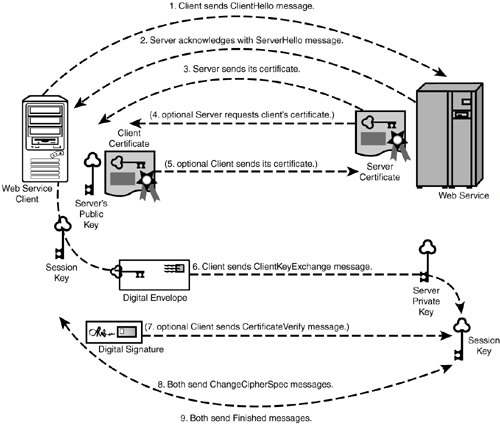The SSL Protocol
| < Day Day Up > |
| In this section, we explain how the Secure Socket Layer (SSL) protocol works using an example in which the client is a Web service requestor and the server is the Web service provider. The steps outlined in Figure A.1 are as follows :
Figure A.1. The SSL protocol. |
| < Day Day Up > |
Securing Web Services with WS-Security: Demystifying WS-Security, WS-Policy, SAML, XML Signature, and XML Encryption
ISBN: 0672326515
EAN: 2147483647
EAN: 2147483647
Year: 2004
Pages: 119
Pages: 119
Authors: Jothy Rosenberg, David Remy